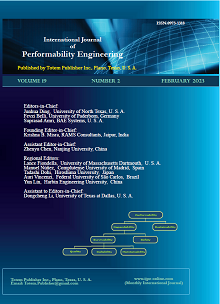-
Image-Based Crop Disease Detection using Machine Learning Approaches: A Survey
- Shikha Choudhary and Bhawna Saxena
-
2023, 19(2):
122-132.
doi:10.23940/ijpe.23.02.p5.122132
-
 Abstract
Abstract
 PDF (340KB)
PDF (340KB)

-
References |
Related Articles
Agriculture is a significant contributor in the global economy, as it is the key source of income for about 50% of the global population. Statistics reveal that in the financial year 2020-2021, agriculture held a share of 20.2% in the Indian economy. Destruction of crops due to diseases can cause major losses to agricultural production, thereby adversely impacting the economy. Additionally, crop diseases are a major concern for farmers as well, as they suffer a drop-in production which badly impacts their livelihood. Thus, disease detection in crops plays a significant role with regards to production of quality agricultural products. In addition to being time-consuming, the traditional methods of crop disease detection involve a large amount of expertise. To fasten up the disease detection in crops, there is a need to automate the disease detection process. Farmers are looking for instant, real-time-based, and non-destructive disease detection methods. Automated disease detection utilizing machine learning approaches can help reduce huge crop losses every year. Machine learning can be a great tool for disease identification at an initial stage, thereby enabling the conduction of preventive actions on time. This paper represents an extensive review of approaches for crop disease detection using machine learning with the aim to explore, assess, and classify the recent developments in crop disease detection.

